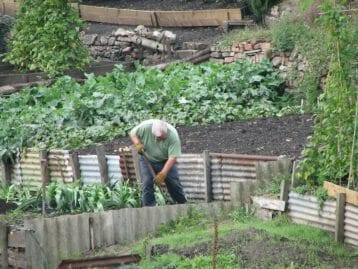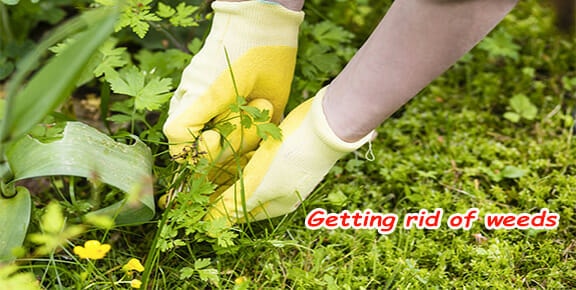We recently came across an excellent article explaining the 5 best winter time vegetables to consider planting prior to winter. The vegetables included are highly nutritional and will go a long way toward helping improve your health. There is no substitute for home grown veggies which are picked fresh and cooked or prepared immediately. The freshest vegetables always contain the highest nutritional content and taste far better than anything you will ever buy at your local supermarket. We hope you enjoy the article.
5 Best Winter Time Vegetables – What You Should Consider
Winter is here, but the truth is the need for a solid and proper diet is always there if you want to maintain your health. Sure, vitamins can be found in supplements and store bought vitamins, but the natural sources of these would be a better way to start the day, instead of cramming our faces with pills as we wake up.
Read on as we point out some useful plants and vegetables that would make for a good solution to your winter diet needs. Whether you want to grow them at home or if you don’t want to mar you landscaping, we’ve got some great tips for you.
Artichokes
These are a really good source of vitamin C and fiber, so you would do well to make use of them whenever you can. They can also help with digestion, but do keep in mind that you need to remove their prickly thorns on the outside as you work on eating them. You can fry them, boil them or even pickle them if the need arises, but do remember to avoid covering the boiling pot to allow the acids in the vegetable to evaporate. In some areas around the world these are part of the gardening process, but in the long run it will be a really good solution if you want a good diet.
When you’re growing artichokes, you will need to keep in mind that they need some room to spread – any good landscape designer will know that. Mature plants can reach up to 1m and they can be about the same wide, making them a challenge to grow at home due to space constraints. They will also need a fertile, light and well drained soil, like sandy loam. Prepare the soil by working about 20cm worth of compost into a trench and this will help the plant get a good start. Remember that waterlogged soil can be one of the things that kill your plants, so be mindful when you’re watering.
Kale
Kale is rich in vitamins, calcium, as well as beta carotene which are really good at making the immune system stronger which can be a necessary step during the winter. Kale is a bit like cabbage and you can find a lot of varieties out there. There are many ways you can use kale, preparing it and cooking it. Fried, boiled, steamed or even served as a part of a salad. Often kale is frozen before it is used for any cooking, since it happens to come out sweeter when the deal is done. Eating kale is a good way to raise your essential vitamins daily intake.
Growing kale at home can be an equally fun opportunity, as long as you keep some rules in mind. You can plant them anytime from early spring to early summer. Add about one and a half cups of fertiliser per 7m or so of soil but only into the top few inches of soil and then plant the seeds about half an inch into this mix. Give it about 2 weeks and the seedlings will start growing.Cabbages
Cabbages are found in a lot of forms, from standard cabbage to cone cabbage, red cabbage and more. It is unique due to its short stem and it happens to be perfect for soups, salads. The greatest thing about cabbage is that it happens to be full of vitamin C, vitamin B, phosphorous, magnesium, as well as calcium. The vitamins are working well for keeping your health up during the cold winter months, so make sure you are aware of their use. Make sure you sow your cabbage seeds at home at about half an inch of depth, then keep them moist and thin them out to the spacing you need to make them work. Fertilise the plants on a regular basis, especially after you’re transplanting and add some nitrogen when the cabbage is half grown.Arugula
Using green leafy vegetables such as arugula is a good source of vitamins, as these are the same as cabbage, cauliflower and more. You can eat it raw or cooked, but in the end you may find it more palatable when eating it cooked with a bit of oil. Arugula is rich in vitamins A, K, C, iron and calcium among other things. It is a really useful addition to your winter diet. When growing these, you’ll need to set out the germinated / young arugula plants about 30cm apart. As the arugula flowers in late spring and early summer the flavor of the leaves will become more intense. As the plants grow larger their taste will get stronger and more pepper-like. You can harvest the leaves of the arugula often enough to add some nice flavor to your salads.
Winter squash
Using winter squash is a good way to ensure you have plenty of carotene, vitamin C, B1 as well as folic acid, potassium and plenty of fibers among other things. You can grow this inside during the winter season, making gardening possible at least for homes outside the general urban areas. If you want to work on spacing and planting it at home, then you will need to sow squash seeds at about 7cm deep. Space your squash in mounds or inverted mounds and thin out the weaker seedlings. In the rows you will need to plant about 2 squash seeds 25cm apart or so in rows a little over 1m apart. This will allow your plants to run down the hill and away from the main stem. Inverted hills will help retain the moisture inside dry regions. At the end of the day you will have excellent results when gardening.Link to source article: http://aussiegreenthumb.com/4371/5-best-winter-time-vegetables/
We hope you enjoyed the article and feel inspired to try doing some of this for yourself. You know we are what we eat and need to treat our bodies well if we expect them to function properly over the course of our lifetime. Any questions please contact us.



